Bluesound Node Nano vs WiiM Pro Plus: which entry-level streamer is best for you?
It's a battle for budget music streamer supremacy
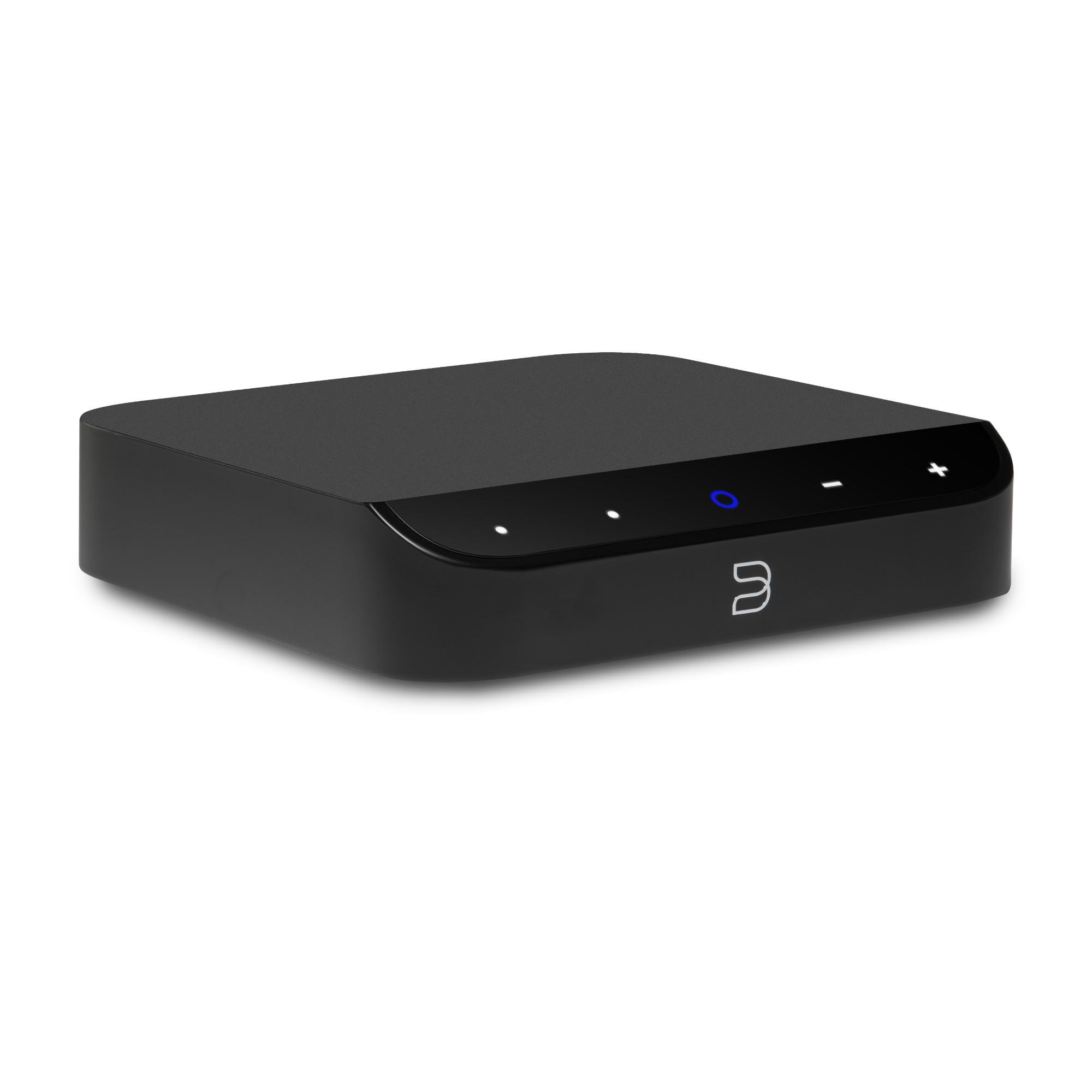
Inputs: USB-A (storage)
Outputs: RCA, coaxial, optical
Sources: AirPlay 2, Bluetooth 5.2, Spotify Connect, Tidal Connect, Qobuz, Amazon Music, Deezer, internet radio, Roon Ready
Max file resolution: 24-bit/192kHz PCM, DSD256
Dimensions (hwd): 3.6cm x 14.3 x 14.3cm
Weight: 570g
The dinky Bluesound Node Nano makes sense if you like sonic solidity and smoothness in an uber-compact package.
Pros
- Smooth, solid sound presentation
- Good streaming features
- Neat, appealing design
Cons
- Below-par rhythmic performance
- Rivals offer greater sonic dynamism
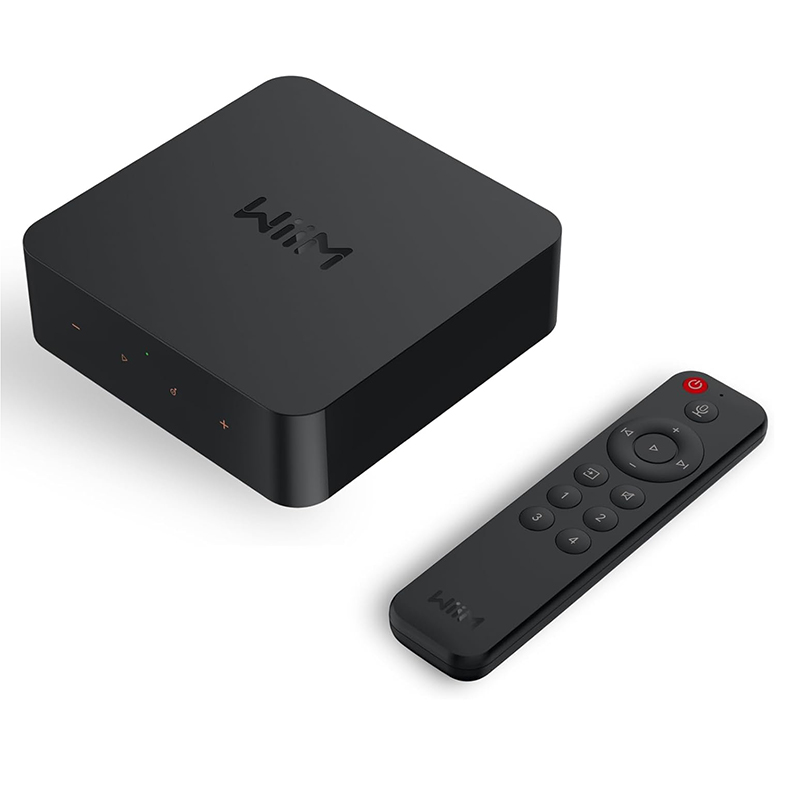
Inputs: Stereo RCA line level, digital optical
Outputs: Coaxial, optical, RCA line level
Sources: AirPlay 2, Bluetooth 5.1, Google Chromecast, Spotify Connect, Tidal Connect, Qobuz, Deezer, Amazon Music, internet radio, Roon Ready
Max file resolution: 32-bit/768kHz PCM, DSD512
Dimensions (hwd): 4.2 x 14 x 14cm
Weight: 400g
An compact entry-level network player that offers surprisingly powerful performance alongside extensive streaming support.
Pros
- Detailed, expressive and organised sound
- Great control app and more extensive streaming features
- Simple to set up and operate
Cons
- Plasticky build
- Could conceivably sound more muscular
Music streamers, also known as network audio players, are fast becoming one of the most essential pieces of equipment in a modern audio setup. While physical formats such as vinyl and CDs will always have their place, in a world dominated by streaming platforms and near-endless digital libraries filled with everything from Brahms to Billy Ocean, bringing a music streamer's wireless playback capabilities to your hi-fi just makes sense.
Music streamers can be everything from high-end heavyweights, such as the new Cyrus 40 ST, to more affordable units typified by the Cambridge Audio MXN10. We're dealing with the entry-level end of the market for this head-to-head, with the Bluesound Node Nano and WiiM Pro Plus both coming in under the £300 / $300 / AU$500 mark.
Bluesound has established a reputation in the world of network audio players thanks to its considerable experience in an expanding field, whereas WiiM made a significant splash with its aggressively priced Pro Plus Award-winner in 2023. At this budget end of the cost spectrum, it's time to determine which streamer offers the most potent sound-per-pound performance.
Bluesound Node Nano vs WiiM Pro Plus: price
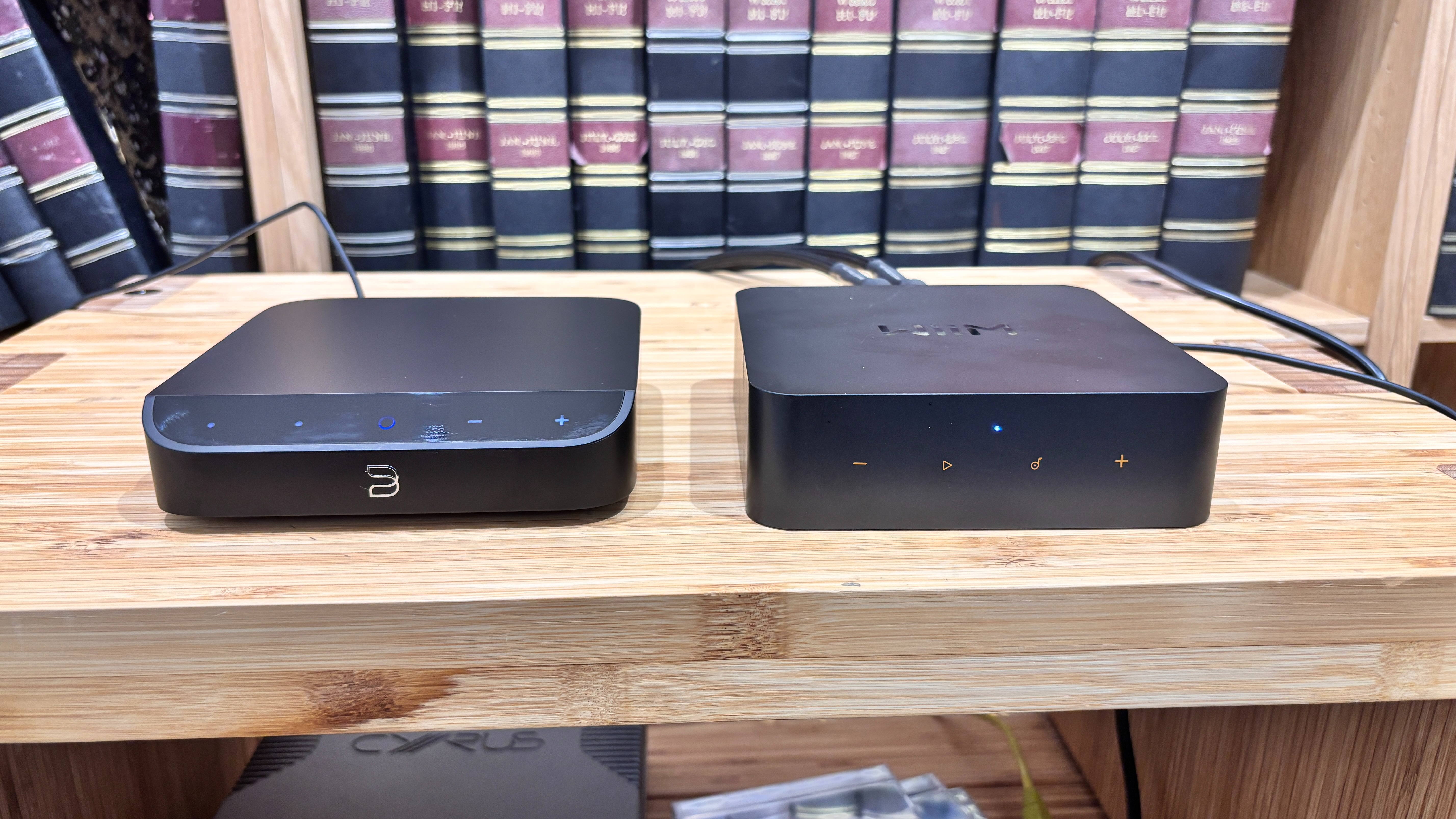
As stated above, we're dealing with two entry-level music streamers, so you probably won't have to dip into your life savings to get your hands on either one. The Node Nano is new to the market at £299 / $299 / AU$499, and we don't anticipate its price tag to come down anytime soon. The WiiM Pro Plus is already very competitively priced at £219 / $219 / AU$339, and frequently drops even lower during sales events.
The Node Nano is the most affordable member of Bluesound's new generation of music streamers, but the WiiM is the cheaper option. A solid win for the Pro Plus.
**Winner: WiiM Pro Plus**
Bluesound Node Nano vs WiiM Pro Plus: build & connections
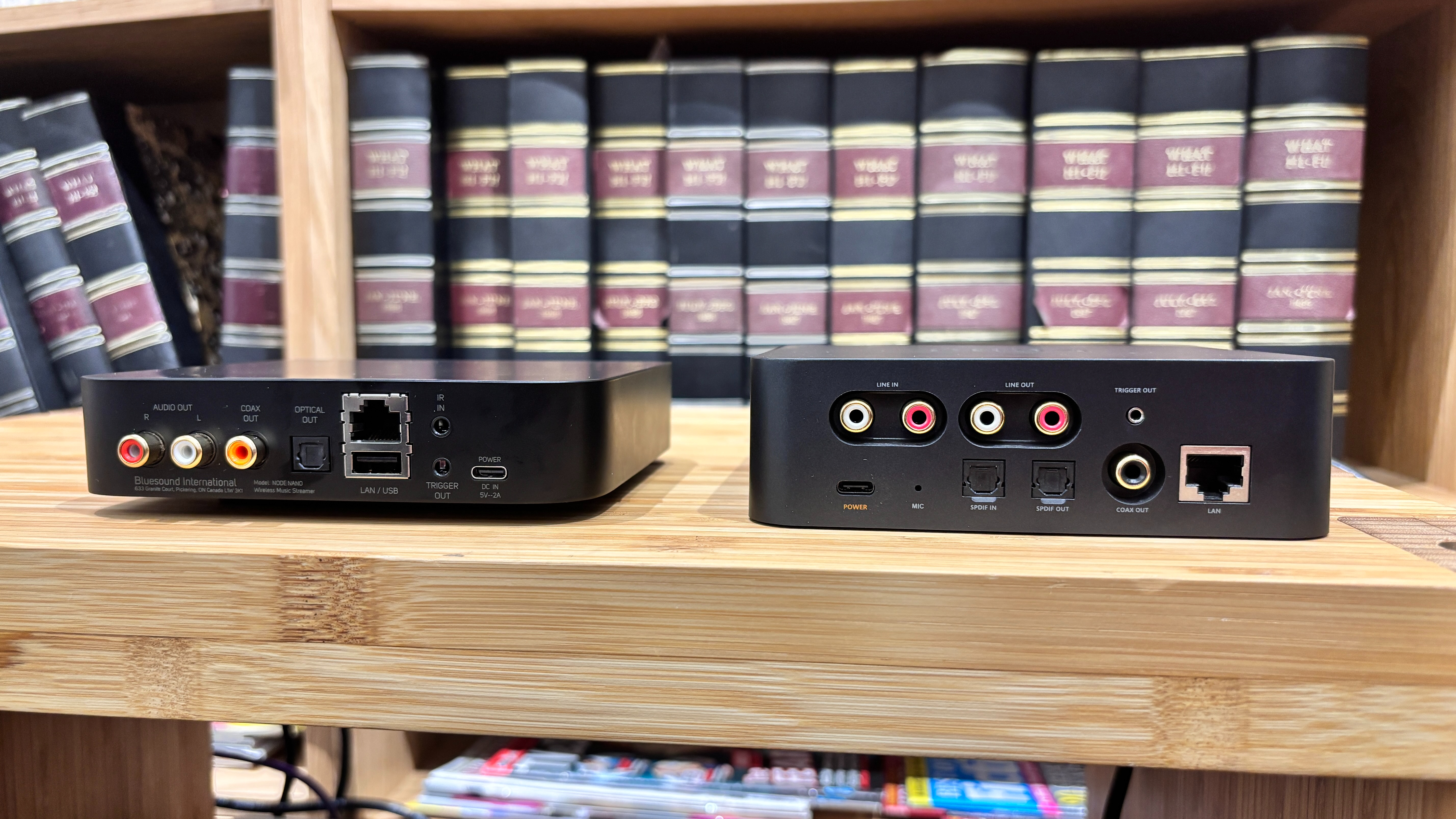
Naturally, we're not dealing with the most luxurious designs ever committed to the market at this budget level, but temper your expectations and you'll find both units to be compact, nicely made and sensibly furnished with the key physical connections.
The latest hi-fi, home cinema and tech news, reviews, buying advice and deals, direct to your inbox.
The WiiM Pro Plus's dimensions (hwd) are a mere 4.2 x 14 x 14cm which, when combined with a weight of just 400g, led us to compare it during our tests to a small paperback book or average box of chocolates. The Bluesound offers a similarly diminutive footprint of 3.6cm x 14.3 x 14.3cm, so it's a little flatter, wider and deeper than the WiiM. At 570g, it's also a touch heavier, and while that's not going to make a huge difference to your setup, the weightier, more substantial feel of the Nano does just give it the edge when conjuring that feeling of quality and craftsmanship.
To look at, the Bluesound is arguably a more attractive specimen. The Nano's touch control panel – which allows for access to saved presets, play/pause and volume adjustment – is housed on a stylish angled frontage that we find a little more appealing than the more utilitarian face of the rival Pro Plus's similar array of responsive touch-points (play/pause, volume, set-up, Bluetooth pairing and preset access). The WiiM is still a nicely made little streamer, with smoothed-off corners, a lack of sharp edges and a finish that seems less susceptible to finger marks, but it is, to quote our review, a product "that hasn't so much been designed as it has been constructed".
What you do get with the WiiM is a small plastic remote control, something you won't find with the Bluesound. You'll also have access to voice control via Amazon Alexa with the Pro Plus, a handy feature that's absent from the rival Node Nano.
The WiiM Home control app takes care of the Pro Plus' control for iOS and Android, a platform we find to be slick, stable, logical and clear, ably keeping up with the equally comprehensive service offered by the nicely laid out BluOS platform on the Nano. The BluOS is a similarly appealing proposition, offering a place to personalise your experience by managing your settings, adding your preferred music services to the platform and curating your preset playlists.
How about physical connections? The WiM Pro Plus rear panel offers a USB-C socket for mains power and an Ethernet socket for hooking up to the internet directly, as well as a digital optical input and output, a digital coaxial output and stereo RCA line-level in and out. As our review noted, it’s a line-up that really should be more than adequate for most users at this price.
Around the back of the Bluesound Node Nano, meanwhile, you’ll find RCA, coaxial and optical outputs, and Ethernet ports plus a USB-C power port, but no digital inputs/outputs or RCA line level input. Neither music streamer offers the luxuries of HDMI or a headphone output at this budget end.
The Bluesound arguably offers a nicer, more substantial build quality, but the WiiM claws back the points thanks to its supplied remote, voice control capabilities and more impressive array of physical connections.
**Winner: WiiM Pro Plus**
Bluesound Node Nano vs WiiM Pro Plus: streaming features
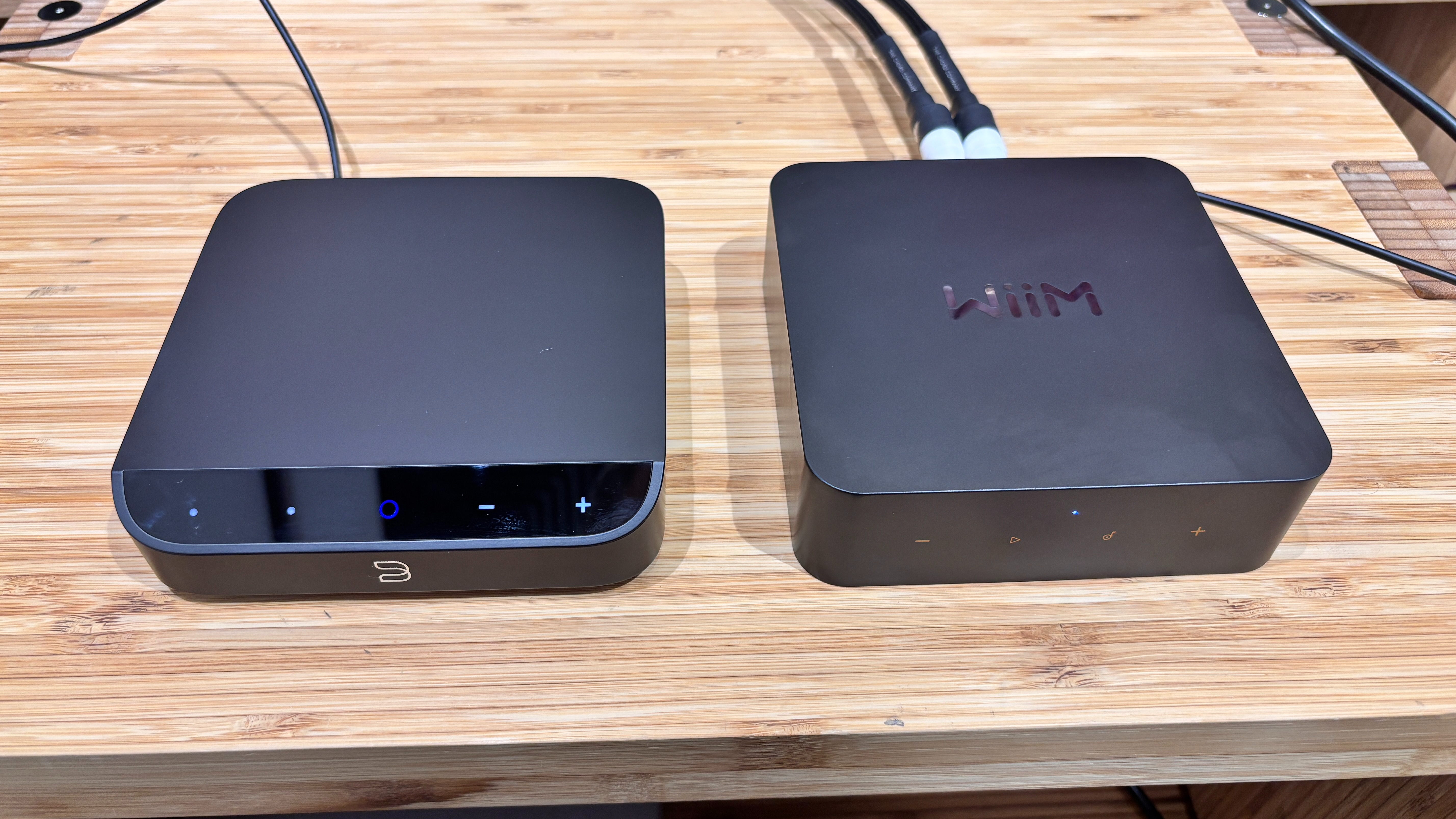
Now that the exteriors have been dealt with, it's time to dig deep into the internals. At the core of the Pro Plus is a capable AKM 4493SEQ DAC chip, an impressive chipset that can handle digital audio files up to 32-bit/768kHz and DSD512. The Pro Plus also packs analogue-to-digital conversion circuitry thanks to the Burr-Brown PCM1861, meaning that if you connect an analogue source to the music streamer, it can then be wirelessly streamed to other WiiM products. Useful if you're building a low-budget multi-room system, say.
Over to the Bluesound Node Nano. Considering it was designed to be a first step into the world of hi-fi streaming, we wouldn’t have been surprised if the Nano suffered a drop in key hardware when compared with its costlier siblings. We've been pleased, then, to find that the smallest member of the Bluesound family packs the same ESS ES9039Q2M Sabre DAC as its bigger brothers. It’s able to handle a decent deal of information, too, offering support for hi-res files up to 24-bit/192kHz and DSD256. You can also create a multi-room system with other BluOS-supporting devices.
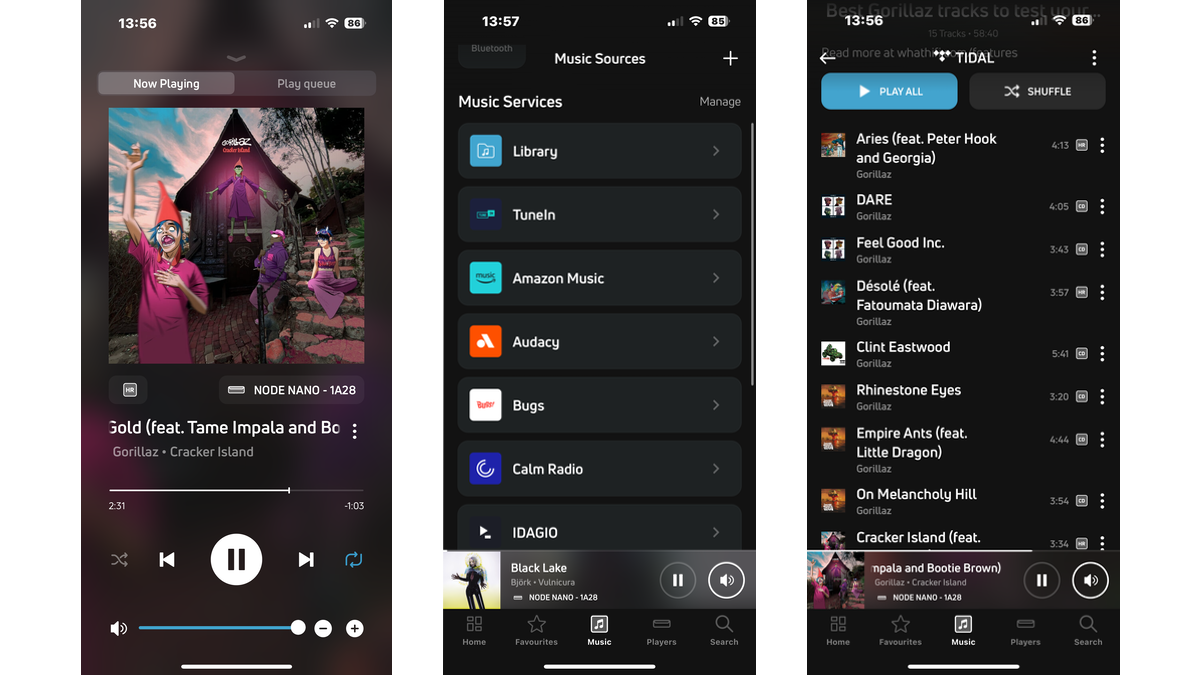
What about those all-important wireless streaming credentials? As well as Bluetooth 5.1 support (with SBC and AAC codec compatibility) and dual-band wi-fi, the Pro Plus offers Chromecast and Apple AirPlay 2, while the control app has support for Spotify Connect, Tidal Connect, Qobuz, Deezer, Amazon Music and TuneIn radio, amongst others. The WiiM app can also easily access music stored on the same network thanks to its DLNA compatibility.
The Bluesound Node Nano does well, but it doesn't quite keep up with the WiiM. Thanks to the limitations of the BluOS platform on which all Bluesound products rely, there are no Google Chromecast capabilities, although you do get built-in support for the same popular streaming services as the WiiM, alongside internet radio. There's also Apple AirPlay 2 support in the absence of Chromecast, and Bluetooth 5.2 over the WiiM's 5.1, but none of the DLNA or UPnP compatibility as found with the cheaper rival. You can still access music from a computer or NAS drives stored on your network, but it involves inputting the network path name in the BluOS app settings – it's an extra step, but the instructions on the brand's website are easy to follow.
Both are strong showings, but for its more extensive streaming feature set, we're giving the win to the WiiM here.
**Winner: WiiM Pro Plus**
Bluesound Node Nano vs WiiM Pro Plus: sound
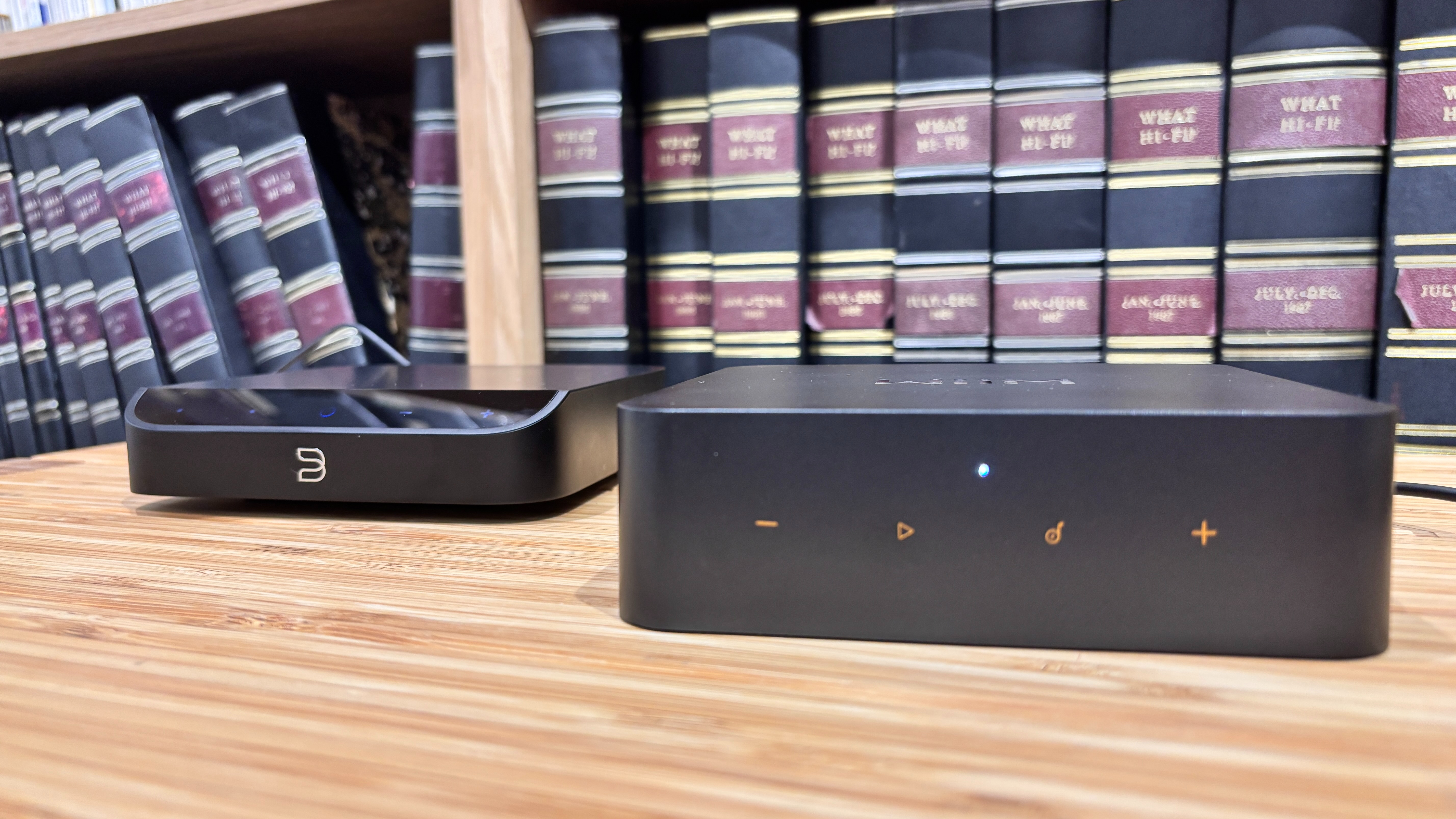
When pitched against each other for sound performance, the Bluesound Node Nano and the WiiM Pro Plus's respective sonic styles aren't quite chalk and cheese, but they're a long way from being two different slices of the same chunk of cheddar. Put simply, each player takes a different approach to how it delivers sound, and it's well worth knowing where you stand if you're looking to decide which is right for you.
Our extensive testing of the Node Nano quickly revealed its main sonic priorities. Solidity and smoothness are the name of the game, embuing tracks with sufficient weight to make most performances sound grand, robust and engaging. The Nano offers Lana Del Rey's voice on Born to Die a great deal of muscle and support, never allowing the American chanteuse, or the music beneath her, to sound thin or undernourished. There’s an impressive sense of scale to the Nano, too, and rarely have we worried that the Nano doesn’t have the sort of musical scope to give music sufficient breadth, while impressive detail levels match the capabilities of the information-rich WiiM.
Smoothness is another of the Nano's great strengths, with an easygoing nature which provides a pleasingly undemanding listen. As we said in our review: "(By) smoothing off hard edges and opting for a more conciliatory approach, we can see the appeal of the Nano when listened to side-by-side with the leaner, sometimes harsher line taken by the rival WiiM Pro Plus".
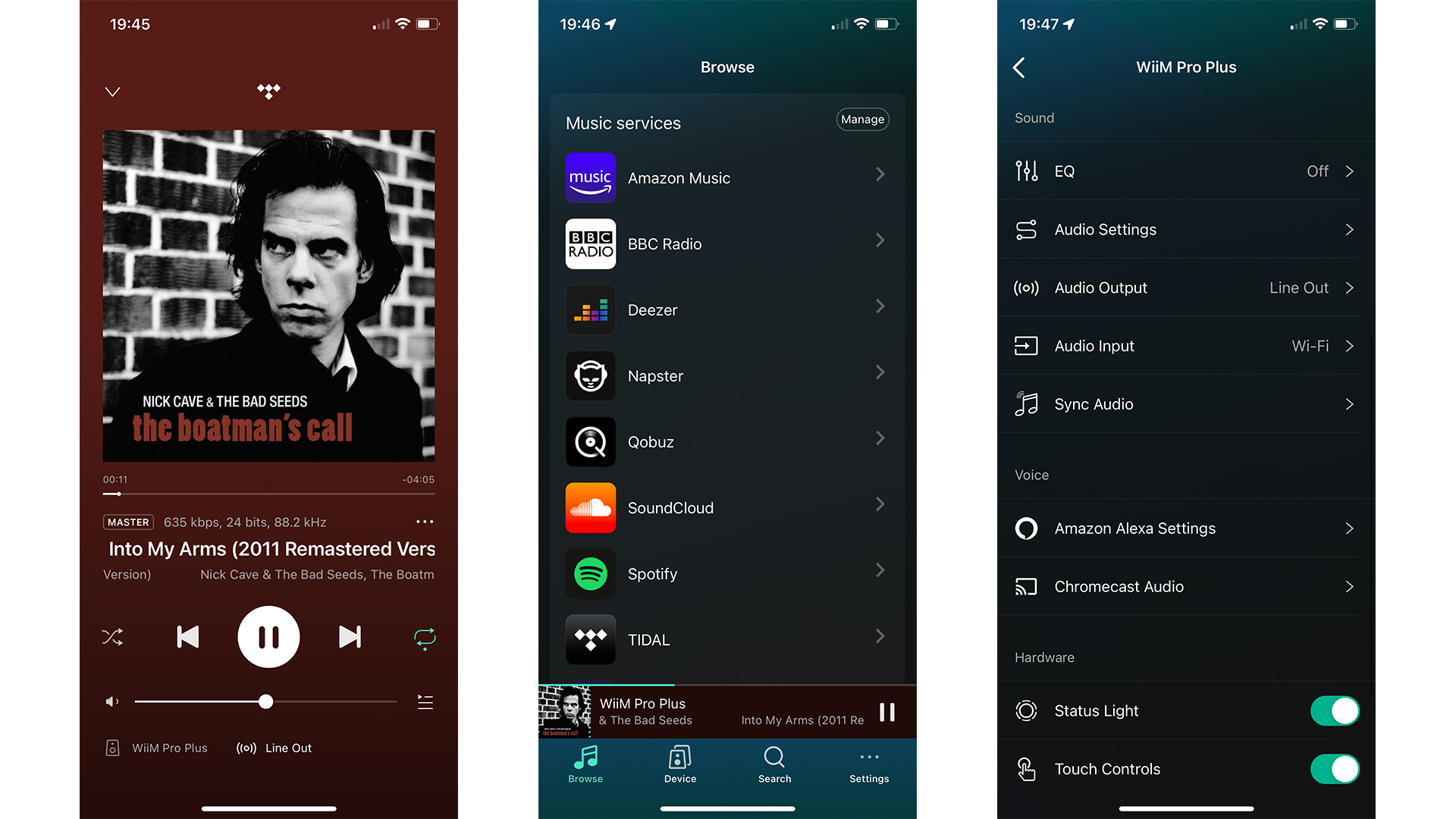
On the subject of the WiiM, we're certainly in leaner, nimbler territory here. WiiM's budget Award-winning doesn't have the muscularity or the smoothness of the Node Nano, instead focusing on agility and spark as its main areas of priority. It's an approach that works exceptionally well; as we stated following our tests, the Pro Plus "isn’t the most muscular listen you ever encountered – it’s much more ‘whippet’ than ‘bulldog’ in this respect – but the low frequencies it generates are straight-edged at the moment of attack, just as detailed and texturally varied as the rest of the frequency range, and are controlled well enough to give the loping rhythm full expression".
It's also more fun and fancy-free than the Bluesound. The Node Nano can tend to make rhythms sound restrained and reeled in, but the WiiM Pro Plus really allows your music to cut loose and blossom with life. It picks up on dynamic shifts more adeptly, too, showcasing a greater dynamic headroom than the slightly limited, smoothed-over character of the Nano. We're also impressed with the amount of overall detail the WiiM picks out, a compliment that extends to the Node's similarly insightful capabilities, so there's no danger of either music streamer giving you a sound that, at this level, feels lacking in texture or information.
Two different approaches that both have their merits. For its fun, fast-paced and dynamic nature, though, we're more enamoured with the wonderful WiiM than we are with the nicely balanced Node.
**Winner: WiiM Pro Plus**
Bluesound Node Nano vs WiiM Pro Plus: verdict
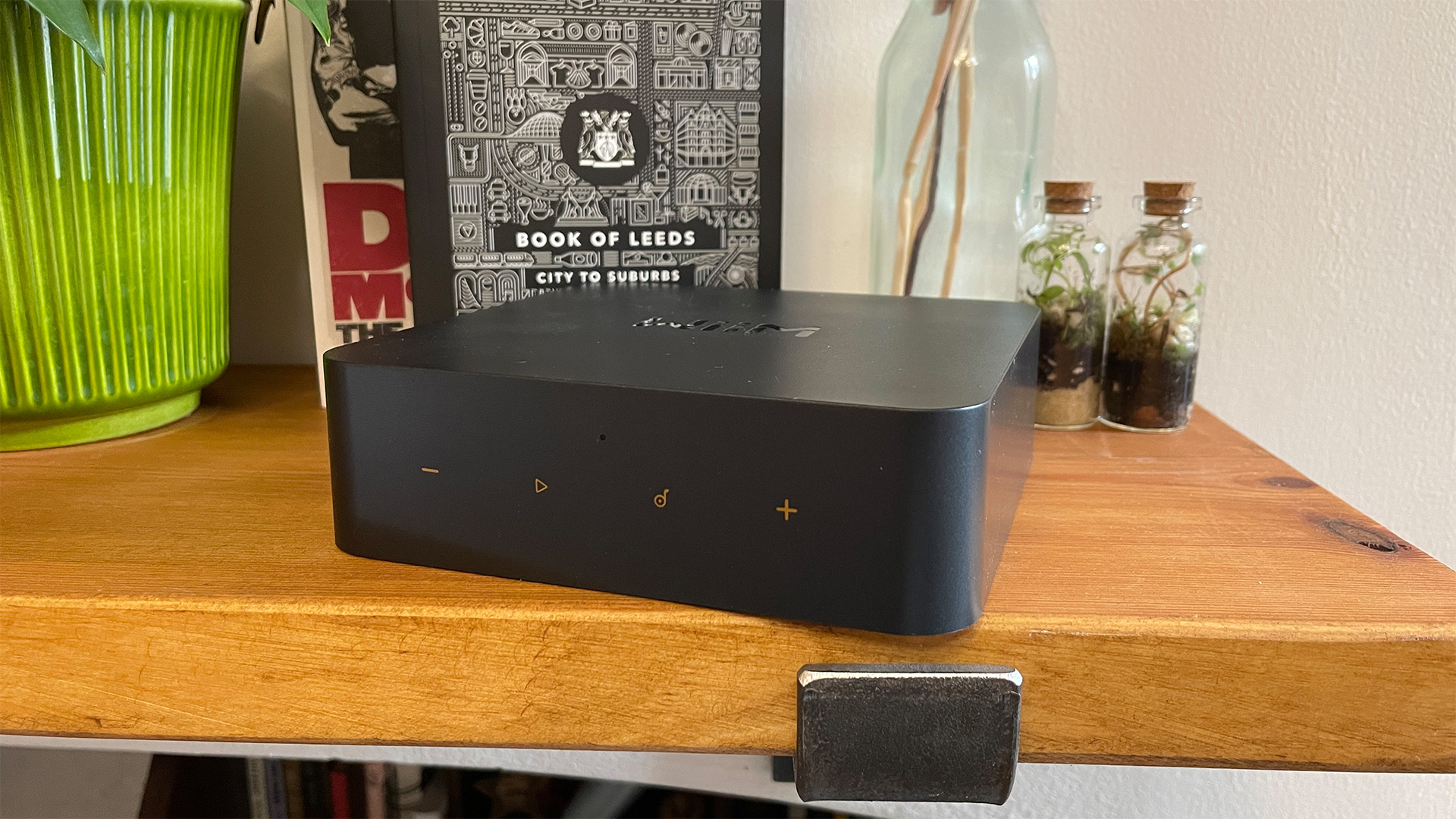
Both of these budget network streamers are good performers, and we'd advise you not to dismiss the Bluesound Node Nano and opt for the WiiM Pro Plus simply because of its current Award-winning status. These are two network players that take different sonic routes, and while we do prefer the nimble, exciting reproduction of the WiiM, the Node Nano has the detail, solidity and smoothness to make a solid case for itself.
It's worth remembering that, currently, the WiiM is a little cheaper than the Bluesound and a little better equipped for features, so if you're keen on the way it sounds and want a more comprehensive streamer to start off an entry-level system, it could be the one for you.
MORE:
These are the best music streamers you can buy right now
Also check out our review of the larger Bluesound Node (2024)
Want something more premium? Read our five-star Cyrus 40 ST review

Harry McKerrell is a senior staff writer at What Hi-Fi?. During his time at the publication, he has written countless news stories alongside features, advice and reviews of products ranging from floorstanding speakers and music streamers to over-ear headphones, wireless earbuds and portable DACs. He has covered launches from hi-fi and consumer tech brands, and major industry events including IFA, High End Munich and, of course, the Bristol Hi-Fi Show. When not at work he can be found playing hockey, practising the piano or trying to pet strangers' dogs.
